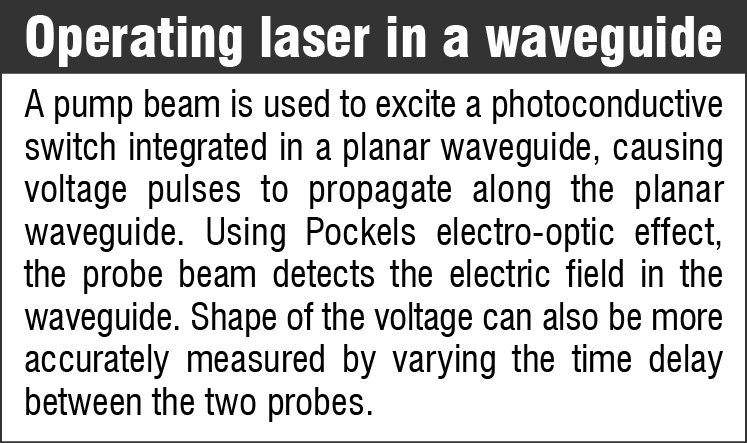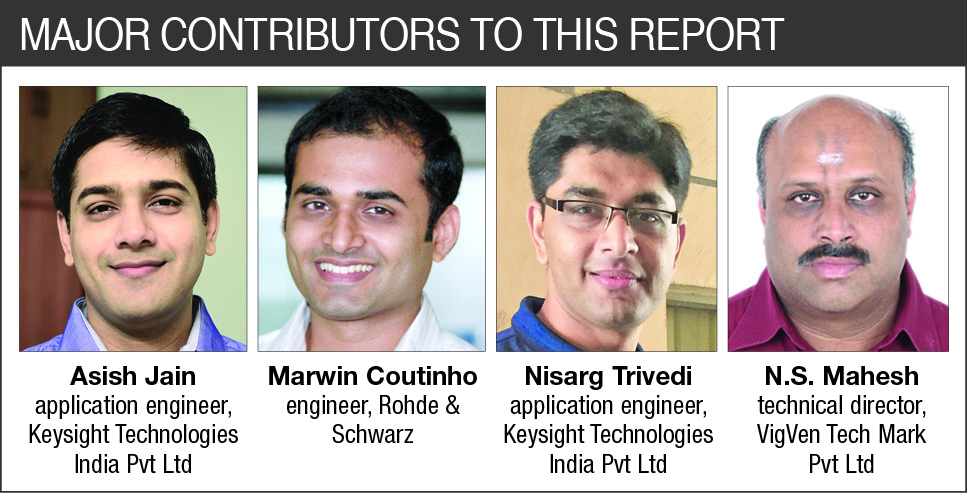Benchtop network analysers have seen huge design changes in the last few years, mostly to ensure an integrated approach to measurements on active devices such as amplifiers and frequency converters. With the growing popularity of dual-source network analysers, measurements can be done with a single instrument.
These are also much faster as the sources and receivers are on the network analysers. But more on that later; let us first look at the changes in network analysers over the past few years.
Requirement influencing design
Vector network analysers (VNAs) have proven themselves to be accurate, owing to their sophisticated test set design and the kind of applications these are used in. Changes in these systems are concentrated on developing innovative calibration algorithms, measurement applications and digital signal processing techniques.
These techniques, for example, are applied once the signal is down-converted and digitised by an analogue-to-digital converter.

System design has changed to accommodate advanced measurements like built-in pulse generators and modulators that help characterise radio frequency or microwatt components in pulsed mode. There is a lot of development in new concepts in millimetre range for a range of applications, especially related to RADAR.
With two-source network analysers having a built-in combiner, these measurements can be done very easily. Built-in second source and combiner networks help with accurately measuring and calibrating inter-modulation distortion (IMD) for amplifiers and frequency converters.
Special low-noise receivers are being used for source-corrected accurate noise figure measurements for low-noise amplifiers and receivers. True-mode stimulus allows for fast and fully error-corrected mixed-mode S-parameter measurements.

Pulsed measurements.
Pulsed measurements for devices such as transmitter and receiver modules, and pulse amplifiers, and noise figure measurements on converters and amplifiers, are some of the recent features being focused on for the design of network analysers.
Harmonic specifications of sources improve with the use of filters in more advanced network analysers to enable better mixed measurements and IMD measurements. Third-order IMD in amplifiers requires two sources and a spectrum analyser with traditional approach.
But it is not just the feature sets that are changing. Analysers are going through physical changes, too.
Aiming for a better handheld device.
Connectivity with the network analyser is simpler, and measurements over a wide frequency range can be made much faster. Vendors now aim for smaller, lightweight devices. “Smaller the size, easier the usage and lower the power losses,” is how one vendor succinctly puts it.
This has led to an increase in field testing equipment as well. Handheld VNAs cover up to 50GHz range, and integrate full two-port VNAs, spectrum analysers, vector voltmeters, power meters and channel scanners, among other measurement devices.
Field testing equipment are being used by engineers, but these have a frequency limitation. Designing handheld equipment means reduction in size, which causes removal of fans, resulting in reduced frequency range.
Cabling with focus on quality.
Field equipment needs to be rugged and should not give in to wear and tear easily. Not only are the test equipment being ruggedised, but also test cables are being improved for better operation. Test cables for improved measurements are a necessity but are often forgotten. Of late, cables are being ruggedised and being made safe for operation at high frequencies up to 40GHz.
VNA test cables from Pasternack can withstand production testing for 50-ohm communication systems. Torsion-resistant connector heads are directly attached to the steel conduit cycle to ruggedize the design for up to 75,000 flexure cycles.
A word of caution for optoelectronics.
With the optoelectronics time-domain measurement method, scattering parameter measurements on planar waveguides up to 500GHz with 500MHz frequency spacing are easily achievable. In addition to high-frequency measurements, this could also be used to characterize high-frequency coaxial devices and to help realize a precise voltage pulse standard.
You need to ensure that you remove the effects of the optical to electrical converter of the photo diode by de-embedding these. This is done after the traditional calibration at the network analyser reference plane to remove the effects of RF cables and connectors.
USB testing made easy.
Windows based operating systems have enabled development of applications for automated gain-compression measurements, mixer measurements, IMD measurements and measurements on balanced device architectures.
Also, with the advent of USB based power sensors, network analysers can be used with USB sensors as power meters.
More recently, femtosecond lasers are making a major difference. Network analysers today offer a higher dynamic range with tuned measurements and excellent receiver linearity. This makes femtosecond lasers a viable option for use in network analysers.
Femtosecond lasers are here
For accurate characterisation of a high-frequency device, a directional coupler is used to separate forward and backward propagating signals. After research showed that a frequency-resolved scattering parameter could also be realised using laser based measurement techniques, the femtosecond laser began to be utilised.
But, how?
The femtosecond laser uses a relatively less complex and less expensive femtosecond laser source to generate short, precise voltage test pulses, which travel along a short gold strip built on a gallium arsenide chip.
The pulse’s electric field changes the gallium-arsenide’s refraction index, so that another laser beam can track and measure phase and amplitude as the signal travels down the strip. It can resolve signals travelling both up and down the conductor, to measure the signal reflected by the material in the circuit.
New releases focus on higher bit rates
Due to an increase in broadband services supporting 4K/8K video streaming, there has been an expansion in optical access networks using passive optical network technology.
These are rapidly moving towards higher speeds, while moving to newer standards at the same time, thus, the development of optical line terminal and optical network units for passive optical network systems that require wideband performance and precise measurement.
MP1800A from Anritsu, for example, is a plug-in modular bit error rate tester for measuring multichannel interfaces up to 32Gbps. MX180014A software controls MP1800A to generate two-channel test-signal burst patterns and set skew.
OLT evaluation input sensitivity and timing tests can be performed using the GUI by setting test signal pattern length and timing.
R&S TS-5GCS test setup combines channel-sounding software with the signal and spectrum analyser and the vector signal generator.
The setup supports development of applications requiring multichannel scenarios up to 40GHz, allowing measurement of channels in 5G frequency bands in centimetre and millimetre ranges.
Very recently, Huwin has introduced a new USB 3.1 Type C test solution. The test fixtures have been designed to measure USB 3.1 Type C connectors using a commercial network analyser.

Analyzing future networks
Over the past couple of decades, VNAs have increased in popularity over scalar network analysers due to their capability to measure magnitude and phase-over wide-frequency sweeps.
The latest generation of VNAs can also measure non-linear behaviour of active devices, like gain and phase compression, IMD, AM-AM and AM-PM conversion, and spurious response.
Advanced technologies like automotive RADAR, 5G and Wi-Gig, and applications like THz imaging and material measurements at millimetre-wave, mandates designers and researchers to characterise components beyond 67GHz. Add that to the ever-growing list of features in instruments and we come up with the possibility that network analyzers may not even be recognizable soon.








